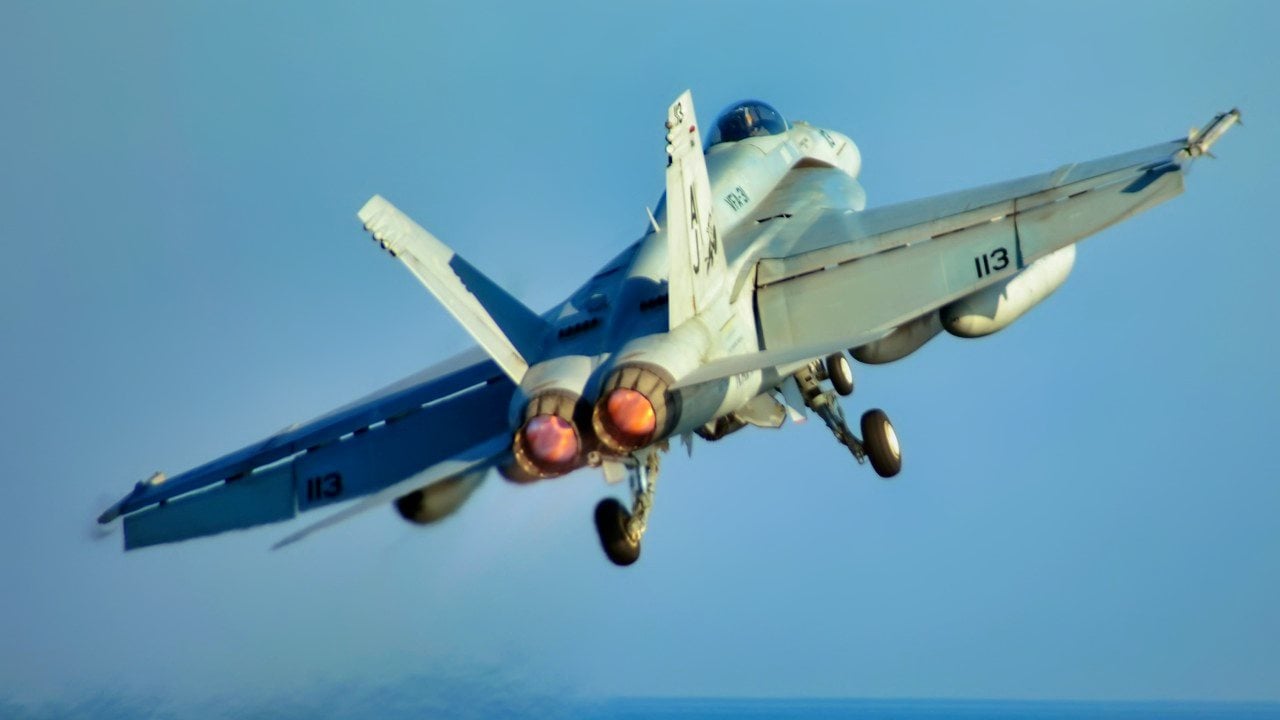Warship Destroyed: A U.S. Navy F/A-18F Super Hornet Fired a 'Stealth Munition'

Summary and Key Points: Just days ago, during Exercise Rim of the Pacific 24 (RIMPAC), the U.S. military showcased its new long-range stealth anti-ship missile by sinking the decommissioned USS Tarawa and USS Dubuque.

-A U.S. Navy F/A-18F Super Hornet launched the AGM-158C Long Range Anti-Ship Missile (LRASM), designed to combat high-value maritime targets like the Chinese Navy's fleet.
-Developed by DARPA, the LRASM offers stealth and precision, and is operational on F/A-18 and B-1B Lancer bombers.
-RIMPAC 24, involving multiple nations, enhances tactical, targeting, and live-fire capabilities, reinforcing alliances and preparing for potential conflicts in the Indo-Pacific.
F/A-18 Super Hornet Showcases New Stealth Missile in RIMPAC Exercise
Just recently, the U.S. military sacrificed two old warships at the altar of innovation.
The decommissioned USS Tarawa and USS Dubuque were sunk by friendly aircraft during Exercise Rim of the Pacific 24 or RIMPAC.
Responsible for the sinking of the USS Tarawa is a new long-range stealth anti-ship missile designed to take on the Chinese Navy.
A New Stealth Missile for F/A-18 Super Hornet
A U.S. Navy F/A-18F Super Hornet that took off from an aircraft carrier launched the stealth munition against the decommissioned warship and sunk it.
Developed by the Defense Advanced Research Projects Agency (DARPA), the AGM-158C LRASM is based on the AGM-158B Joint Air-to-Surface Standoff Missile – Extended Range (JASSM-ER). It is designed to take out enemy surface combatants with stealth and precision. In terms of customers, both the Air Force and Navy are interested in fielding the stealth munition in an operational capacity, as evidenced from the testing. Right now, the AGM-158C LRASM is operational on the F/A-18 Hornet and F/A-18 Super Hornet fighter jets and the B-1B Lancer strategic bomber.
“We have continued to invest in the design and development of LRASM’s anti-surface warfare capabilities to ensure that warfighters have the 21st century security solutions they need to complete their missions and come home safely,” Lisbeth Vogelpohl, LRASM program director at Lockheed Martin Missiles and Fire Control, has said about the munition.
“This event was a testament to our commitment to deliver reliable products that work each and every time, ensuring those who serve stay ahead of ready,” Vogelpohl has added.
The Navy plans the AGM-158C LRASM a short-term solution to fill the “offensive anti-surface warfare air-launch capability gap,” according to Naval Air Systems Command (NAVAIR). It is intended to be used against high-value maritime targets, such as the Chinese aircraft carrier fleet or Chinese guided-missile cruisers and destroyers.
With the likelihood of a conflict in the Indo-Pacific against China always on the radar, the Navy and Air Force are investing heavily in platforms and munitions that could take on the challenge and win. A conflict in the vast Indo-Pacific would be one predominately between air and naval forces, much like the fighting between the United States and Imperial Japan in World War Two. As such, munitions like the AGM-158C LRASM are of the highest priority since they could given an advantage in naval combat.

RIMPAC 24 is designed to bolster American alliances and partnerships in the region. Dozens of countries with scores of warships, hundreds of aircraft, and thousands of troops are participating.
“During the SINKEXs, participating units from Australia, Malaysia, the Netherlands, the Republic of Korea, and the U.S. Air Force, Army and Navy gained proficiency in tactics, targeting and live firing against surface ships at sea,” the Navy said in a press release.
“Events like live-fire SINKEXs give participating nations the ability to test and conduct training on weapons and systems in a realistic environment that cannot be replicated in simulators. Additionally, these training events refine partner nations’ abilities to plan, communicate and conduct complex maritime operations such as precision and long-range strike capabilities,” the Navy added.
About the Author:
Stavros Atlamazoglou is a seasoned defense journalist specializing in special operations and a Hellenic Army veteran (national service with the 575th Marine Battalion and Army HQ). He holds a BA from Johns Hopkins University and an MA from Johns Hopkins’ School of Advanced International Studies (SAIS). His work has been featured in Business Insider, Sandboxx, and SOFREP.
All images are Creative Commons.
